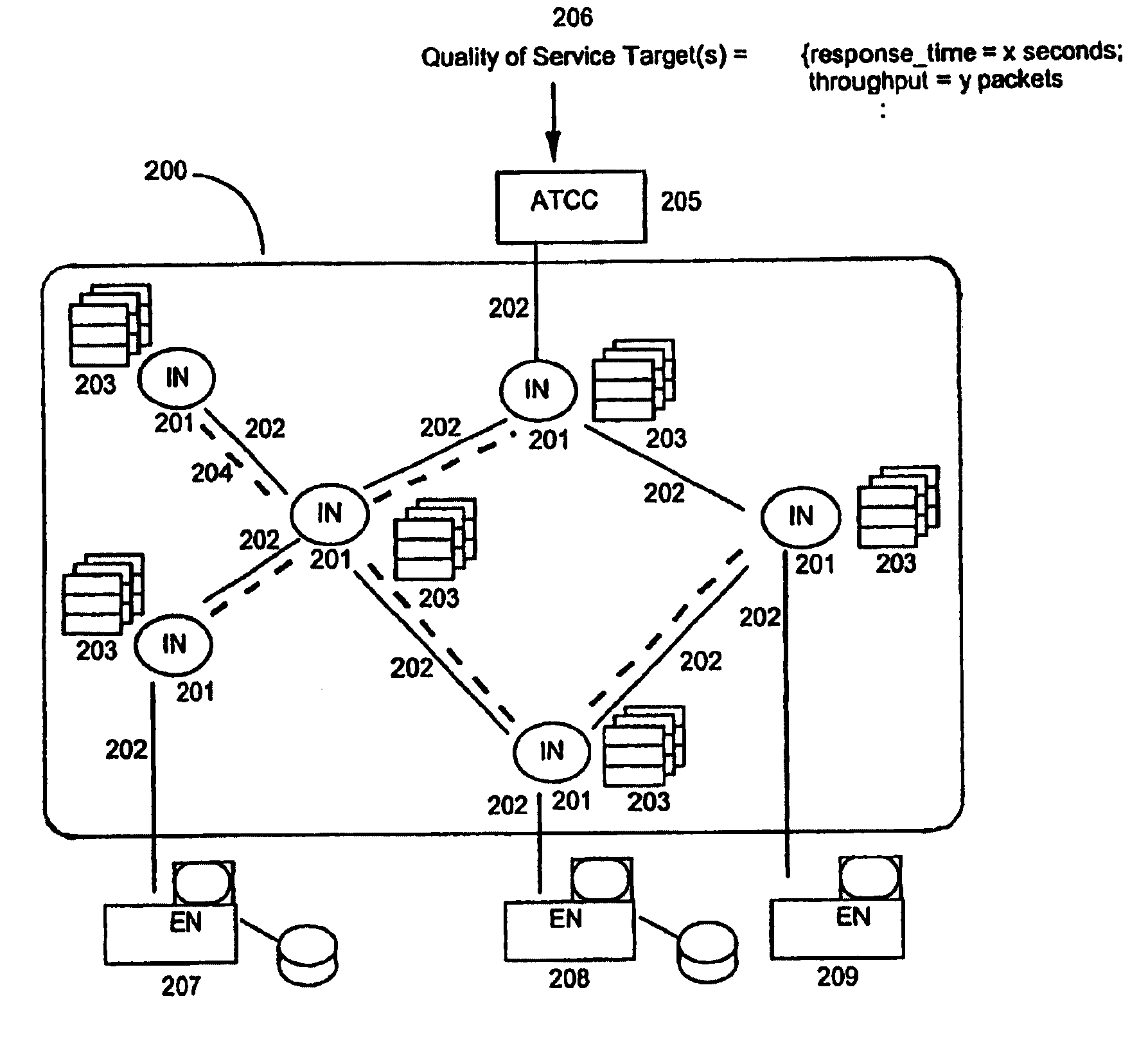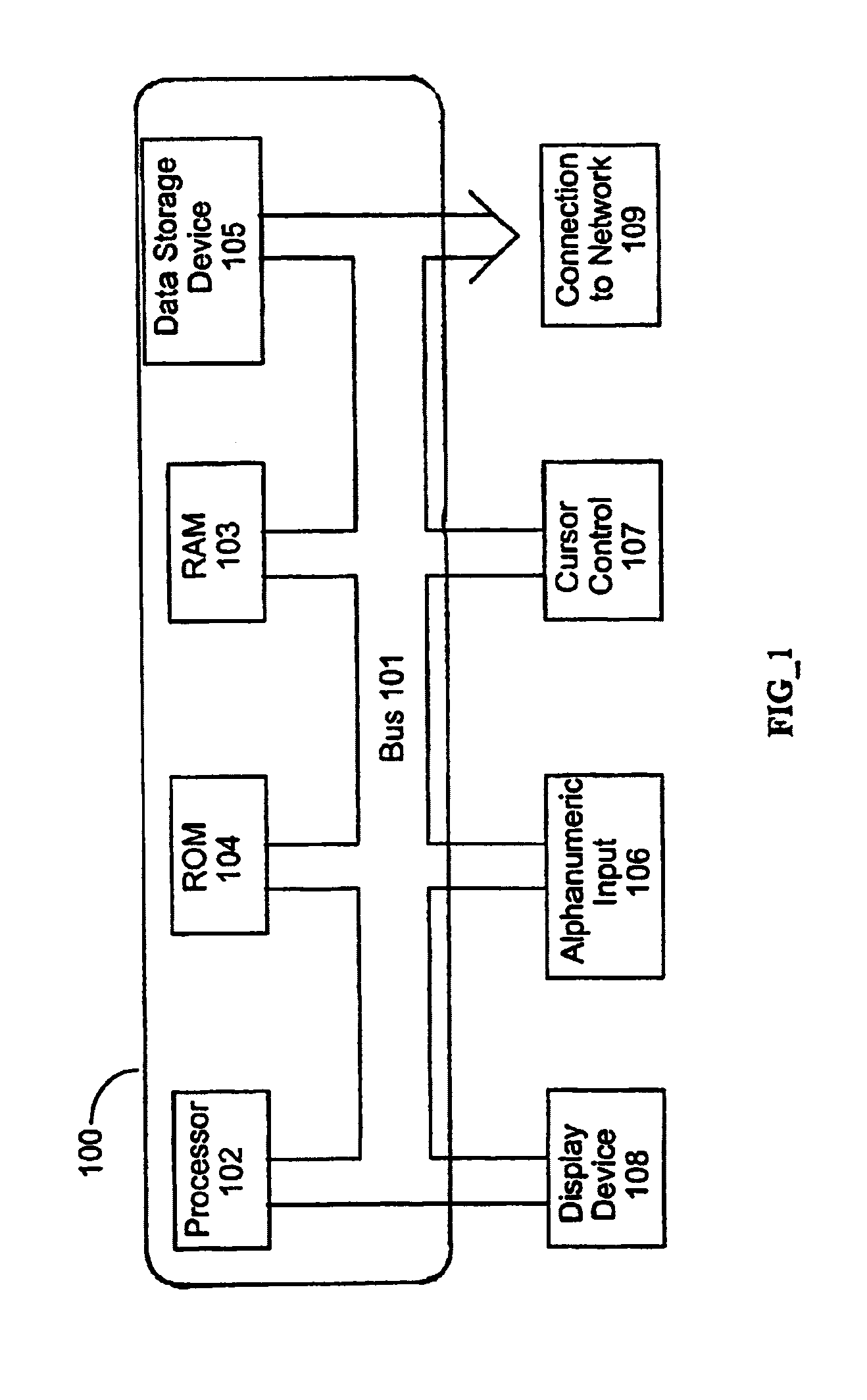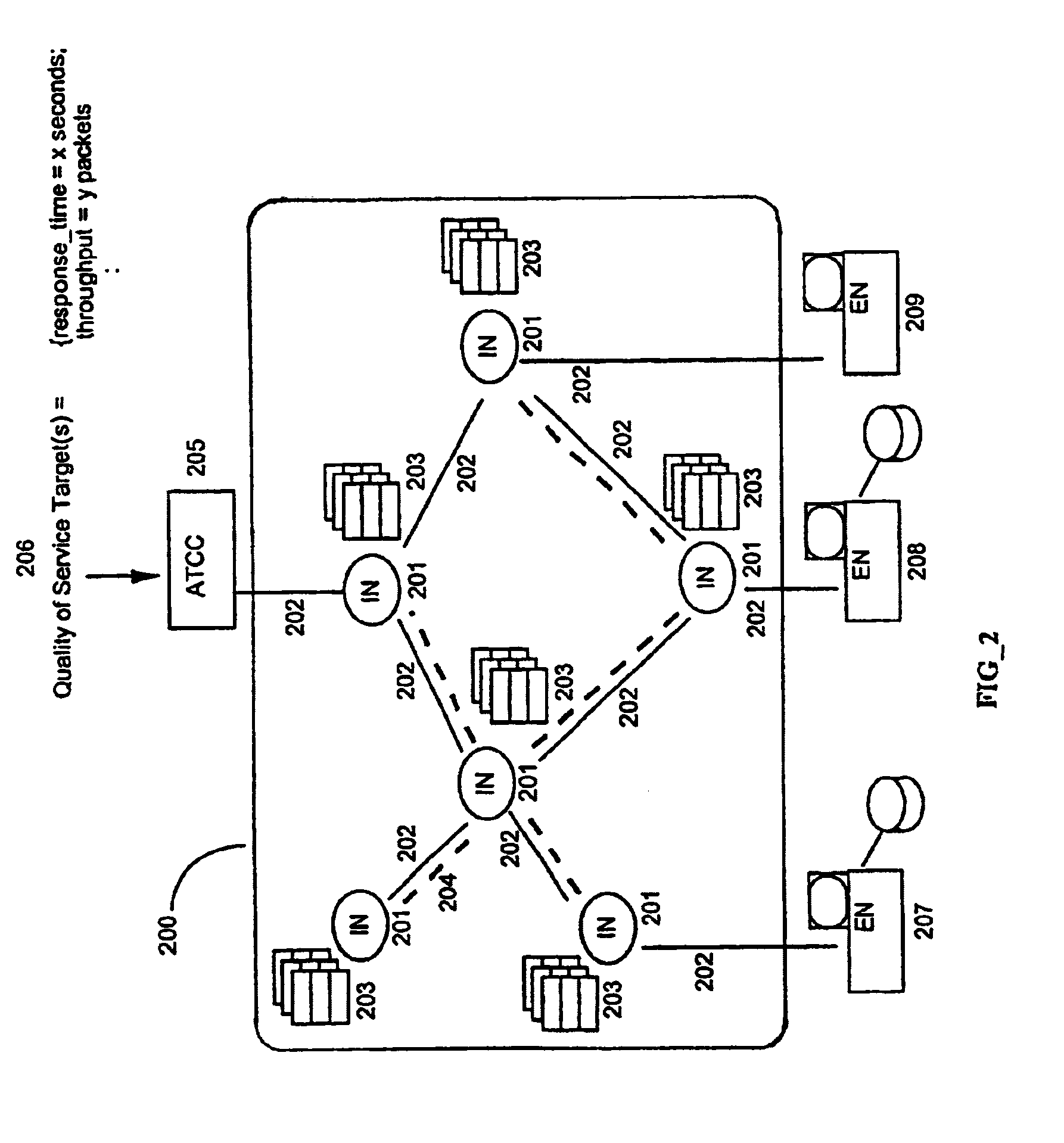Automatic traffic and quality of service control system for communications networks
a technology of automatic traffic and quality control system, applied in the field of automatic traffic and quality of service control system for communications networks, can solve the problems of high robustness, redundant links, and high efficiency, and achieve the effect of improving performance and minimizing transit through congested regions
- Summary
- Abstract
- Description
- Claims
- Application Information
AI Technical Summary
Benefits of technology
Problems solved by technology
Method used
Image
Examples
Embodiment Construction
[0025]A general description of the traffic intensity surface and maps and how they are constructed with the present invention can be illustrated by examining how weather maps are constructed. A weather map is a graphical depiction of the state of the atmosphere over a certain geographical region at a given time. To produce weather maps and weather predictions requires two systems: a monitoring system consisting of a number of instrumentation points where sensors are located to collect state information about the weather, including such variables as temperature, barometric pressure, etc.; and a meteorological modeling system that receives the state information thereby collected and which uses this information in conjunction with a mathematical model of the atmosphere's dynamics to predict the weather. The model, generally speaking, is implemented in the form of a software program that is stored on digital computer, although analogue computers can also be used in some circumstances to...
PUM
 Login to View More
Login to View More Abstract
Description
Claims
Application Information
 Login to View More
Login to View More - R&D
- Intellectual Property
- Life Sciences
- Materials
- Tech Scout
- Unparalleled Data Quality
- Higher Quality Content
- 60% Fewer Hallucinations
Browse by: Latest US Patents, China's latest patents, Technical Efficacy Thesaurus, Application Domain, Technology Topic, Popular Technical Reports.
© 2025 PatSnap. All rights reserved.Legal|Privacy policy|Modern Slavery Act Transparency Statement|Sitemap|About US| Contact US: help@patsnap.com



